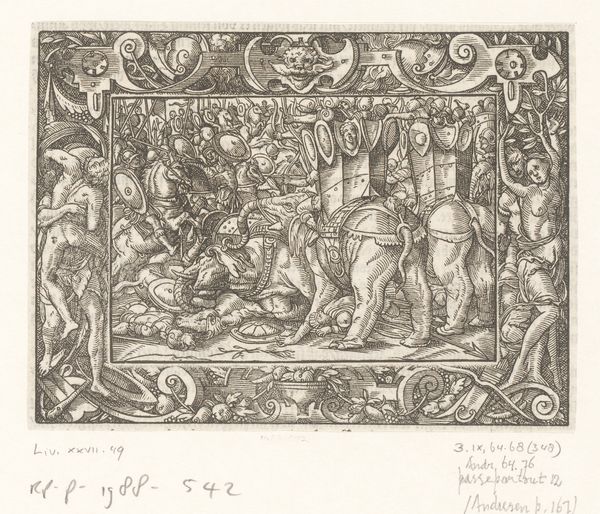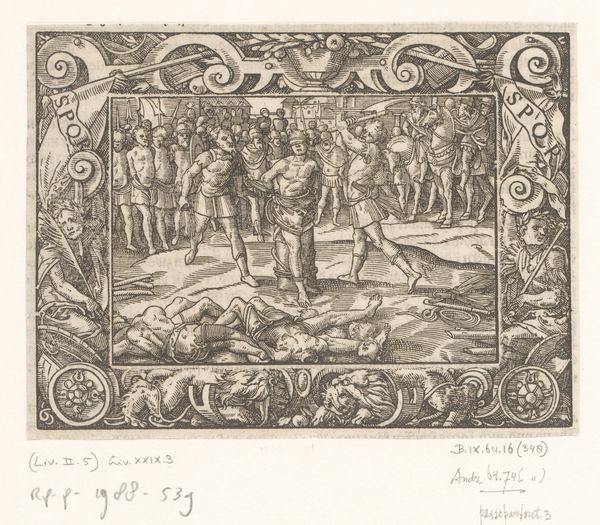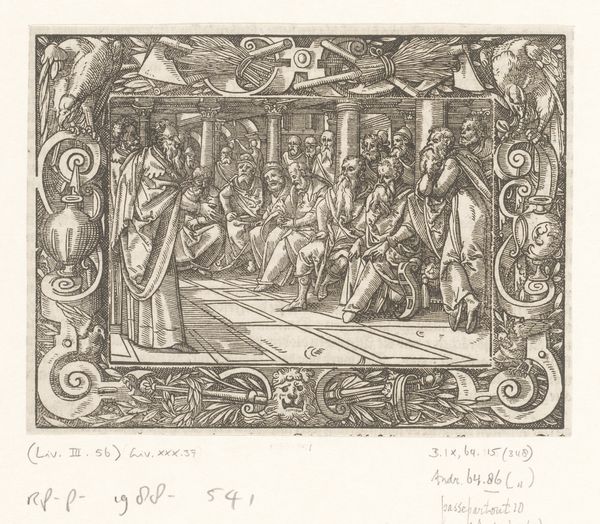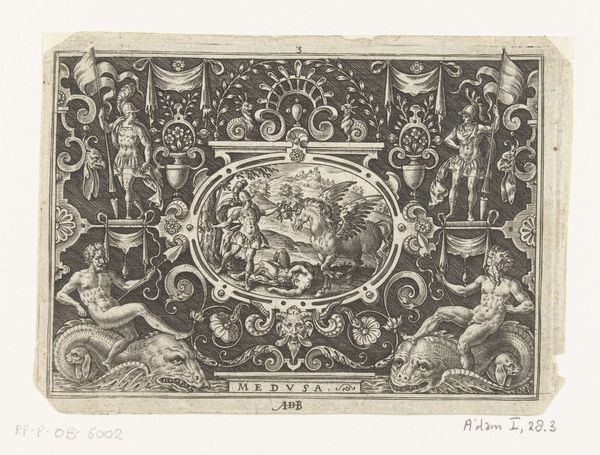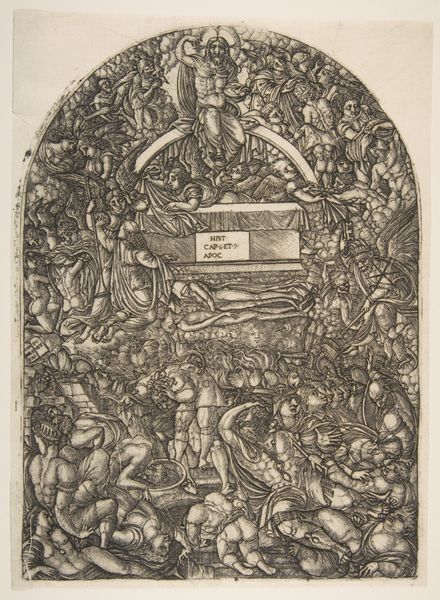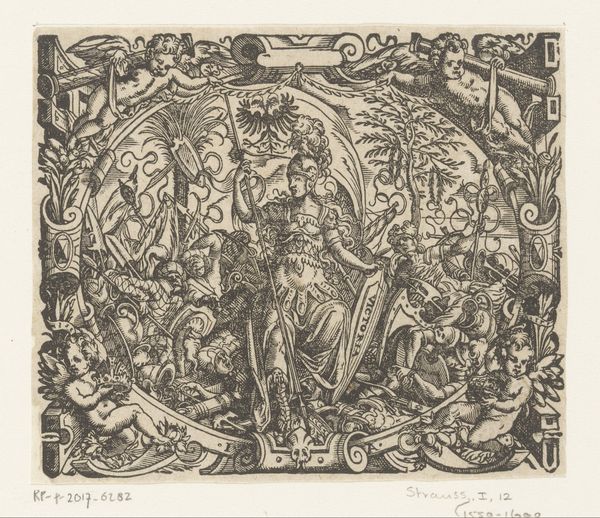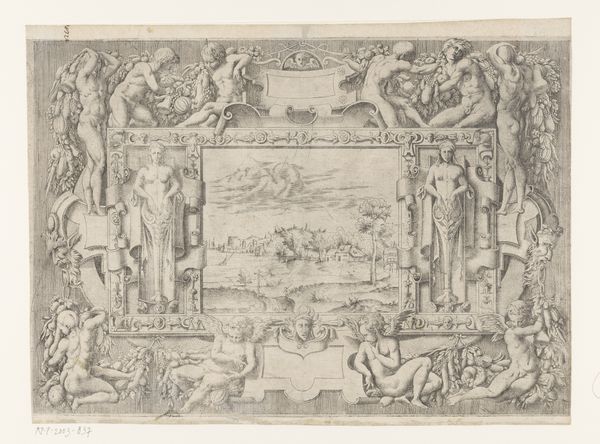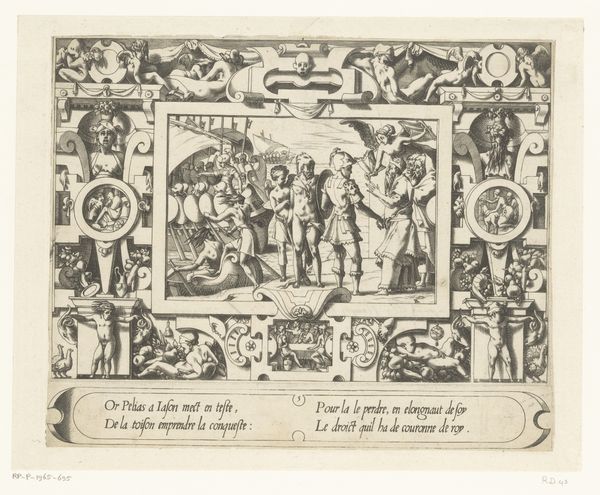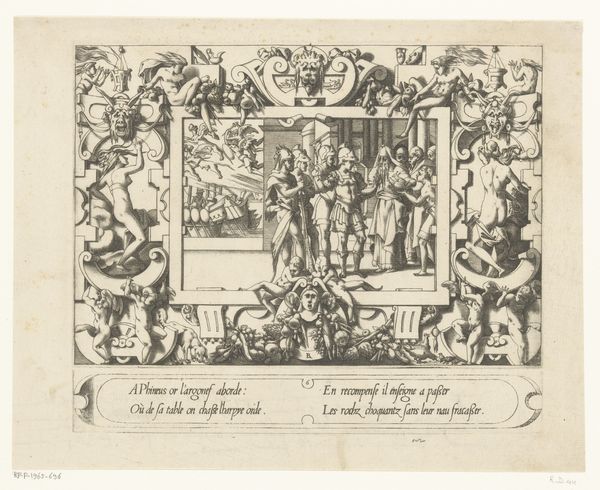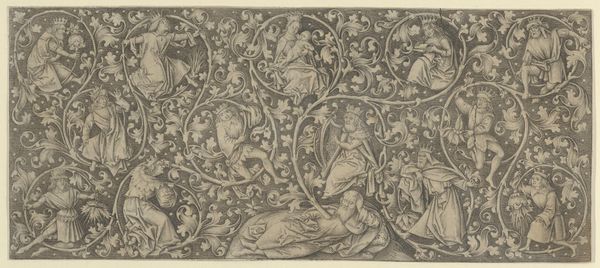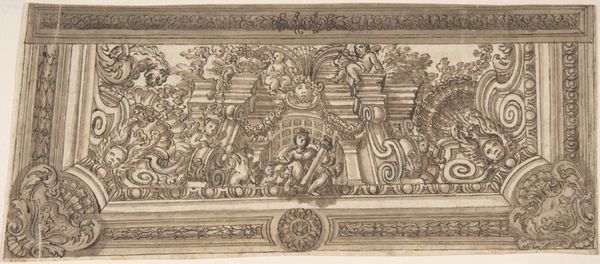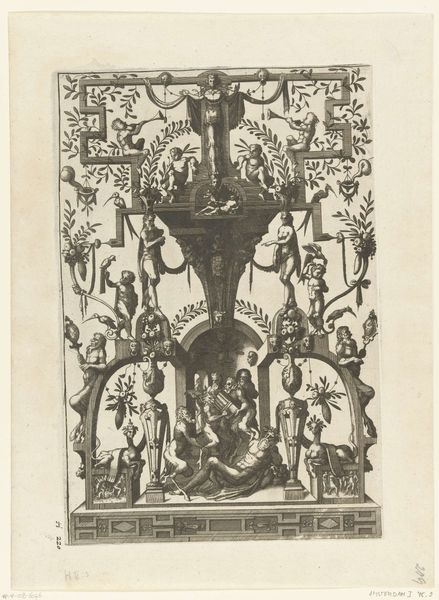
print, engraving
# print
#
figuration
#
11_renaissance
#
geometric
#
line
#
history-painting
#
engraving
Dimensions: height 108 mm, width 147 mm
Copyright: Rijks Museum: Open Domain
Editor: This engraving, titled "Battle between the Romans and the Samnites," dates to 1574 and is by an anonymous artist. It feels incredibly dynamic, like a freeze-frame of pure chaos and violence. What strikes you when you look at this piece? Curator: My gaze is immediately drawn to the shields. They aren’t just defensive tools; each one is emblazoned with a unique device. These symbols, although small, represent complex tribal identities, kinship networks, and a shared cultural memory for both the Romans and the Samnites. What emotions or associations arise for you when considering them? Editor: I hadn't thought of it that way. To me, the shields felt like generic battlefield props. But the idea that each contains a history makes it far more interesting and the fight itself, more complex! Curator: Precisely. Think about the act of bearing those symbols into battle. What sort of psychological effect does that have on a soldier—on both sides of the conflict? Are they fighting only for land or power? Or is there a deeper, more emotionally resonant conflict at play? Editor: I suppose fighting under a symbol connects you to the values that emblem embodies. I wonder if, by depicting that visually, the artist hoped to tap into the Roman values and, by extension, evoke in their audience the importance of their continuity through this imagery? Curator: Exactly! Consider that this print was created during the Renaissance, a period fascinated with classical history. The artist likely intended for the visual symbolism of this battle to resonate with contemporary viewers. He's not just illustrating a historical event, but constructing a cultural narrative, connecting past and present through imagery. Editor: So much symbolism packed into one image. Now I’m seeing entirely new dimensions of meaning. Thanks for opening my eyes. Curator: My pleasure! It's these echoes and resonances across time that make art such a powerful means of communication, inviting each generation to engage in a dialogue with the past.
Comments
No comments
Be the first to comment and join the conversation on the ultimate creative platform.

